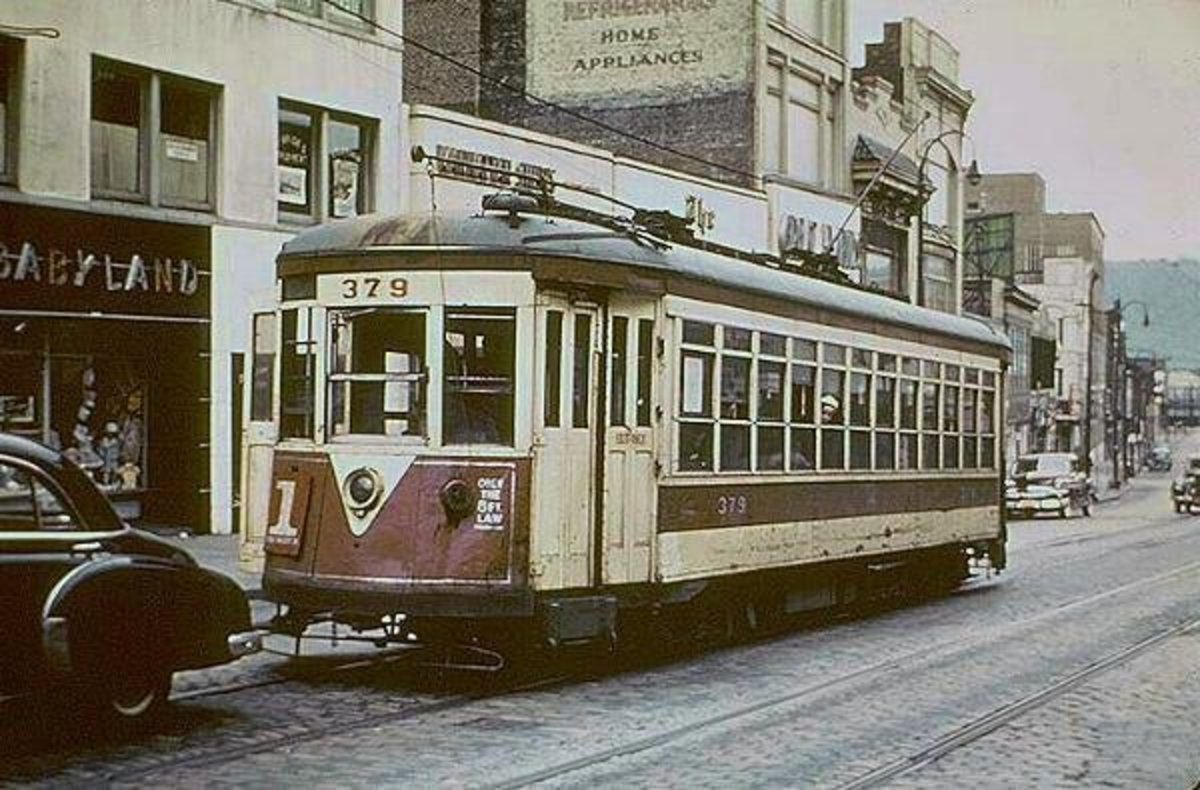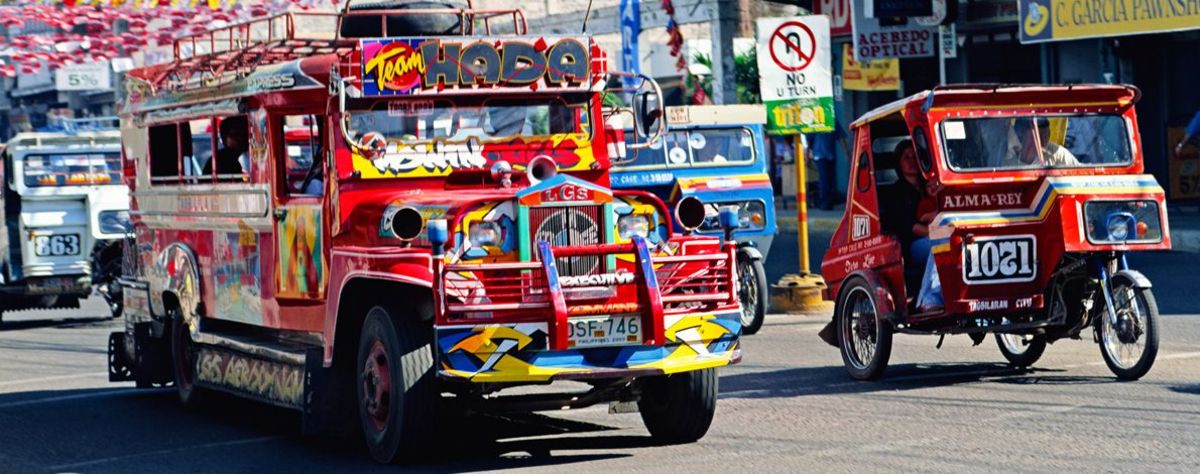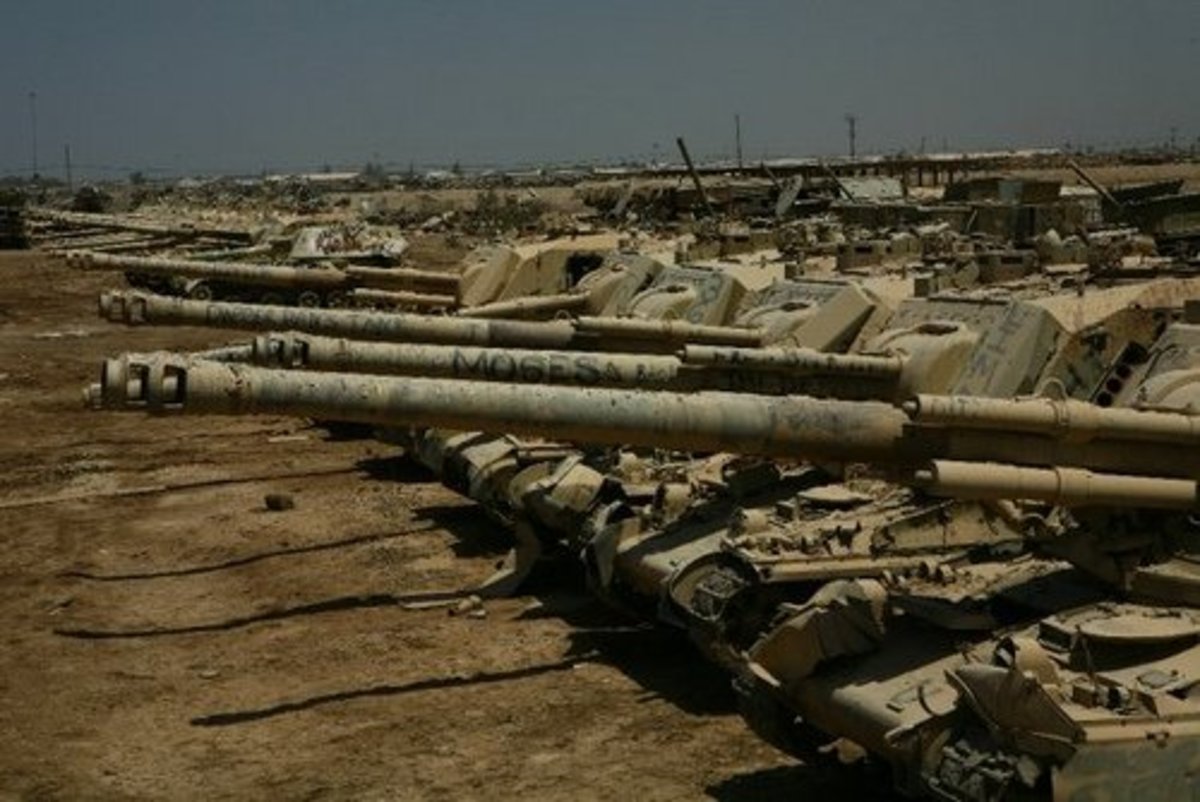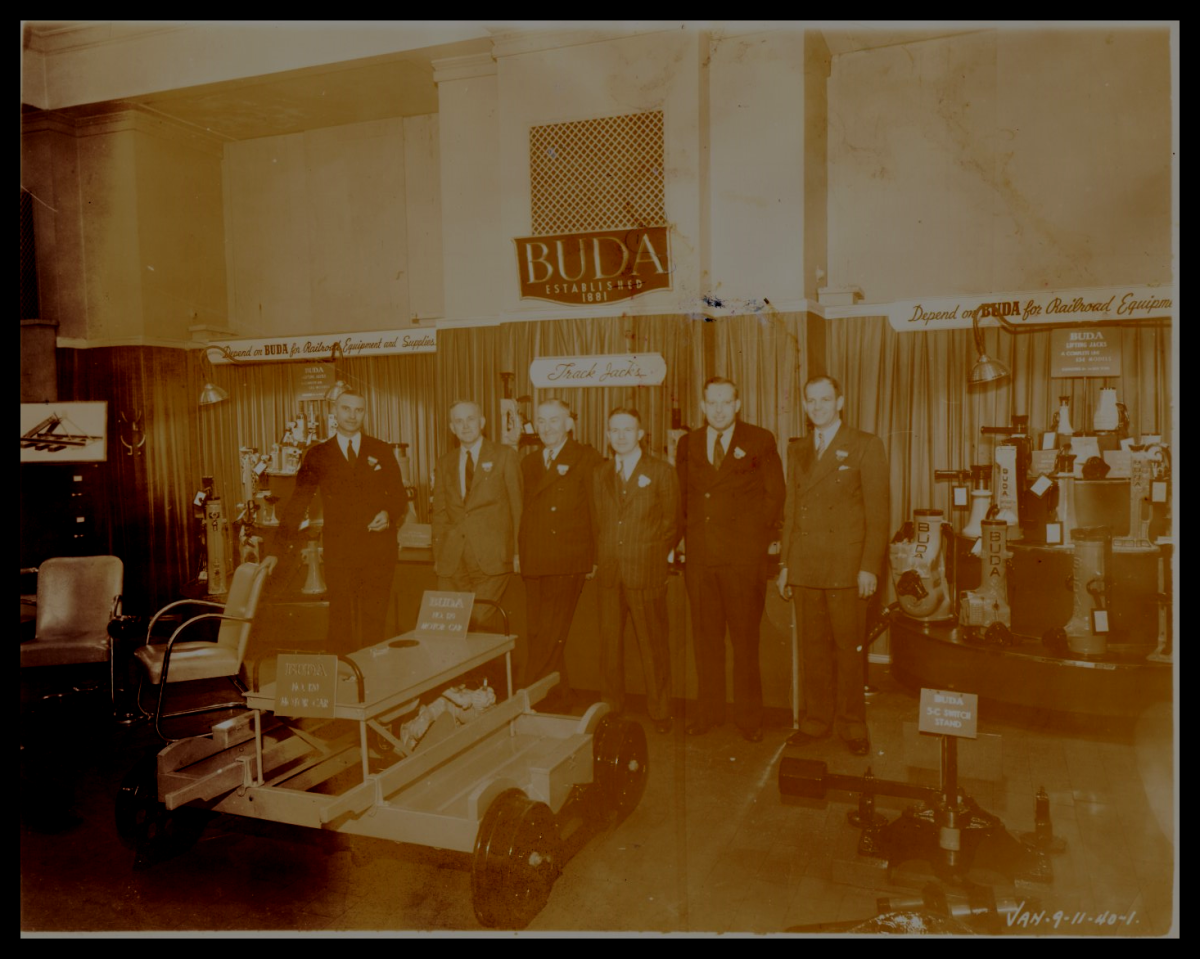Chicago's Trolley Disaster - The Green Hornet
The Green Hornet after the fire
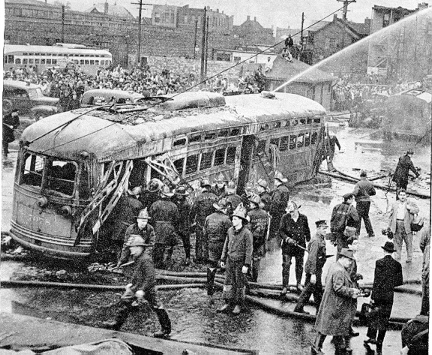
When you think of Chicago there is a good chance you think of the famous EL which runs throughout downtown and, now, stretches to the suburbs both north, south and west. It is hard to imagine the city without thinking of the streets with those steel struts supporting the tracks. It is hard not to imagine the roar of the trains as they run right past the windows of the office buildings that comprise downtown Chicago. Beneath these, on the streets, run a comprehensive bus system that connects the various EL stops that you can't quite get to from one train to the other. All in all, Chicago has a very good public transportation system comprised of buses, subways and EL-trains and commuter rails. However, it wasn't always the case.
A busy city
At one time, like many cities throughout this country, the city of Chicago was connected through an extensive trolley system. Starting in 1859 these trolley lines snakes throughout downtown Chicago and into the surrounding areas carrying thousands upon thousands of passengers to work and shopping and all around the city. At first they were drawn by horses, but after the turn of the century these trolley lines resembled the kind of vehicles you probably think of. Tracks were run throughout the streets and cars that looked a lot like buses were used with wires extending above the car to wires which ran along the streets. Passengers entered the cars from the street, paying their fares much like they do buses today and exited onto streets as well.
For much of the century this served Chicago well. The problems involved were frustrating at times. For example, an accident in the road that stretched across the tracks made getting around those obstacles difficult for the trolleys attached to tracks and wires. If an accident occurred right in front of a trolley car it was impossible for the vehicle to swerve around it. If there was a flooded underpass, it was impossible to make a simple diversion so that the passengers and driver could move around.
By May 25, 1950, the trolley system was ingrained in the minds of most Chicagoans. While the city councilmen sometimes proposed the elimination of the trolleys in favor of a bus and subway system, in general most people took the trolleys as a matter of course. The downtown area was still covered with wires and tracks and the cars criss-crossed the city carrying their precious cargo of men, women and children.
In 1945 and 1946 the company that ran the trolley system, the Chicago Surface Lines, ordered a number of new cars from the St. Louis Car Company. The St. Louis Car Company had just introduced the new Presidents Conference Committee cars and they were sleek, smooth, quite, quick to accelerate and came in a mixture of cream and green pain schemes. They were quickly dubbed “Green Hornets” by the public.
The cars were created to be operated by two people. At the back of the car sat the conductor where three rear entrance door sat. It was his job to greet the passengers and collect the fares. The Green Hornets had the new “blinker” doors which slid sideways and resembled a blinking eyelid. The passengers entered at the rear and then exited the cars at the smaller middle doors or the larger blinker doors at the front of the car. At the front of the car sat the operator who was in charge of the speed and starting and stopping of the car.
The interiors of the cars were comfortable and modern for the time. The windows were cranked down much like in an automobile. They cranked down far enough that a very slim passenger, or maybe a child, could climb out the windows, but the company then added bars across the windows to prevent people from sticking their heads and limbs out and risk injury.
A fateful day on a familiar route
On May 25, 1950 the trolley with the designation of 7078 was assigned to the Broadway-State route. This was a particularly long route that ran all the way from Devon Avenue on the north side to 119th street on the far south side. The night before this fateful day a rainstorm had drenched the city. This had resulted in several viaducts becoming flooded which would require that the street cars would have to be diverted using elaborate re-routing methods. Since each car ran on electricity and ran low to the ground it was impossible for them to just blow through the flooded viaducts.
One of the routes that would be affected by this was the route for trolley 7078. What would soon happen was a huge list of mistakes and confusing rules that caused one of the largest motor vehicle accidents in United States history and changed the way public transportation would exist in the Windy City from that point forward.
Before 7078 approached the flooded viaduct a previous streetcar had been told to stop, go back and then divert to a switch track that would allow the driver and the passengers to go around the flooded area. It was a difficult operation and it slowed down the lines in general and backed up traffic. The flooded area was also causing problems with traffic as cars and trucks slowly crawled through the water. When the previous streetcar had made the turn the switch was left open for reasons no one was ever able to determine. Because everything was running late, the driver of car 7078 was driving faster than he should have.
A man with a flag
Stationed near the viaduct was a man with a flag. He waved the cars to a stop and then guided them back to the turnaround portion where the elaborate detour could occur. He had been diverting traffic and the trolleys all morning long. Trolley 7078 was in working order and it had been recently checked. The car was also moderately full as most of the cars were that morning taking people to work.
Circumstances coming the other direction seemed to be making things much worse. A gasoline truck driven by a man named Mel Wilson was headed northbound. The truck was headed for some gas stations in the neighborhood and had almost 8,000 gallons in the tank. It too was approaching the flooded viaduct at a high rate of speed.
No one has ever been sure exactly how the motorman running car 7078 missed the man with the flag. It has been theorized that the man ignored him. How he could not have known about the flooded viaduct and the turnaround also remains a mystery. What is known is that the trolley came into view and the flag man began waving his flag frantically. The trolley was moving fast and he could tell almost immediately. He stood there in shock as the trolley shot past him and then hit the open switch from when the prior streetcar had made its turnaround.
The trolley struck the open switch and immediately jumped its rails. It then veered into the northbound lane. The passengers inside were thrown against first one side and then the other and were sent into screaming piles of humanity. There may have been just a moment when the motorman and Mel Wilson, the truck driver, saw each other and then the two vehicles collided near an intersection. There was a hideous sound of crunching metal, breaking glass, screeching brakes and people screaming. Then, as the impact shot along the street, a spark was struck and 8,000 gallons of gasoline exploded into flames. Just before the gas truck has exploded the trolley had torn open the hull of the tank and sent a flood of gasoline into the street, which now became a river of fire. As stunned witnesses stood by looking on in terror they saw a single fireball erupt from the tanker and completely engulf the trolley.
Inferno
The trolley had been full. Every seat was taken and the sudden turn had sent them tumbling into the aisle. As the fireball erupted they found themselves trapped inside the green and cream vehicle as the world turned to flame outside. Those that had time to get to their feet found themselves baking alive as the flames covered the outside of the trolley, turning metal white hot and then setting the interior on fire. Those inside began to pile up against the side doors and the rear doors. They found that those doors were unable to open.
The windows were designed to be aesthetic rather than as escape routes. Those who tried to climb out found that the windows only rolled down so far and even if they could wedge an arm out they could climb no further because the bars across the bottom of the windows prevented them from crawling out. Inside the heat reached extreme levels. Inside the clothing, hair and flesh were melding into one giant mass from the heat and the screams from inside were only partially drowned out by the sound of the flames from the fire which covered the trolley.
Somehow thirty passengers managed to crawl out of the wreck. Even those who managed to survive were severely burned. Behind them, 33 other passengers were burned alive, trapped against the doors. After the accident it was revealed that one 14-year-old girl had been quick enough on her feet to locate and pull a knob that would open the center doors. This allowed many of those who survived with severe burns to get away.
The explosion itself rocked the entire neighborhood. Windows shattered up and down the street and buildings shook. The fireball itself shot two to three stories into the air. Because of the ripped sides of the gas truck the flames rocketed down the street and lit up seven buildings along State Street. The walls of some of those buildings collapsed after the shock of the explosion and then the heat from the flames. The heat was so intense that metal melted and twisted, glass from surrounding buildings was fused and parts of the street were melted as the asphalt grew too hot.
The fire department arrives
The fire alarms began to ring. Thirty fire companies responded and arrived upon a scene of horror. They began pouring water on the out-of-control fire and it would take nearly two hours for them to get it back under control. Meanwhile as many as 20,000 people came out of their homes and offices to watch the fire and the flames. The smell of burning flesh hung in the air and would linger in the area for days after the accident.
Once the fire was out the horror show really began. The emergency workers who arrived were scarred by the sights that greeted them when the arrived. They pried the doors, smoke billowing from inside the vehicle and the smell of burnt hair, clothing and flesh hung thickly around their noses and mouths. They worked and worked to pry open the rear doors and what greeted them was a pile of black and burned flesh that did not resemble humanity anymore.
According to some reports they were not even able to find body parts in some instances. They found skulls and parts of limbs. All of them had to be removed and placed nearby in a temporary morgue. They discovered that the other doors had no emergency lever that could have been pulled. The passengers had bottlenecked at the doors and been fused together by the intense heat.
The wreckage investigated
Once the wreckage was pulled away from the scene investigators set about pulling it apart and inspecting it. It was quickly determined that car 7078 was in perfect working order. They also determined that the gasoline truck was also working just fine. Both the motorman and the driver of the truck had been killed in the accident so interviewing them was impossible. Most of the fingers pointed to the driver of the trolley who had had 10 minor accidents before this accident.
The real blame fell on the construction of the trolley car itself. The problems cited included the lack of emergency pull levers throughout the car so that the doors could be opened in case of an accident. The steel bars across the windows prevented anyone who could open the windows from escaping. The doors of the vehicle, other than the small side doors with the emergency escape lever, could not be opened by anyone outside or anyone inside the car. It was a senseless tragedy that cost 33 people their lives.
A new transportation method gains ground
Those who had been pushing for the elimination of the trolley system suddenly found themselves in the majority. The public itself seemed shocked by the tragedy and the neighborhood where the accident occurred took months to recover. The trolleys began to slowly disappear from the streets of Chicago along with the tracks and the wires overhead.
Eventually a comprehensive bus system was put into place and the Chicago Transit Authority took over the public transportation duties for the city. These days there aren't even any tracks left in the streets to remind those who live in Chicago that trolleys once criss-crossed the entire area. Meanwhile, the bus system has expanded past the borders of the cit of Chicago and into the suburbs with the creation of the Regional Transportation Authority.

